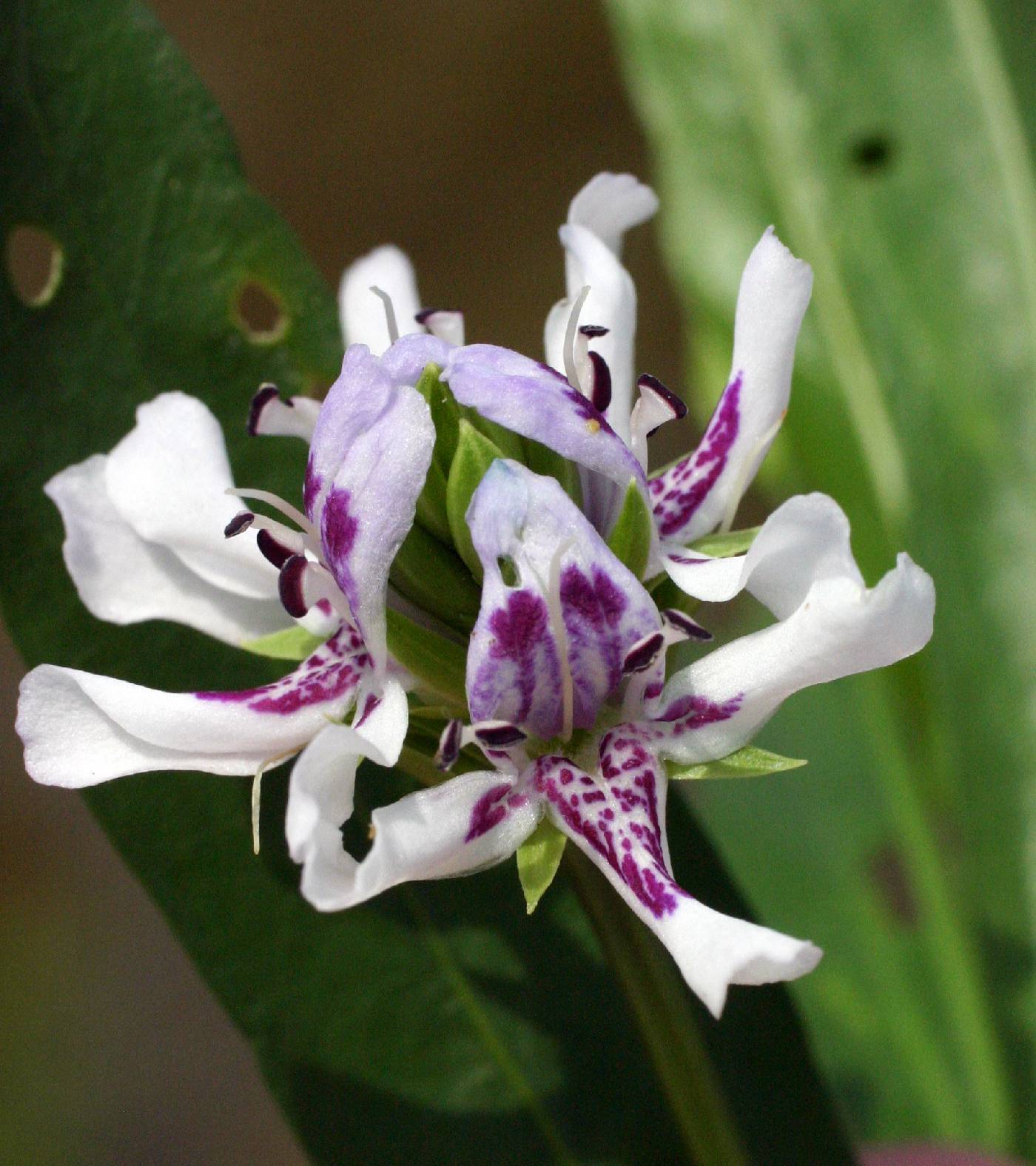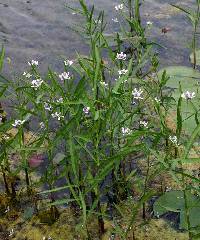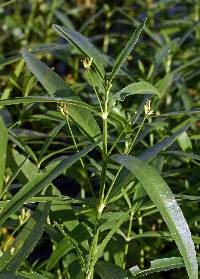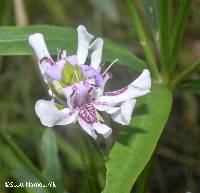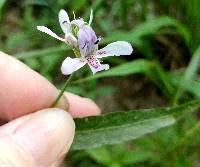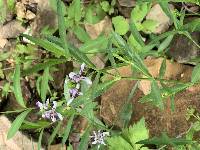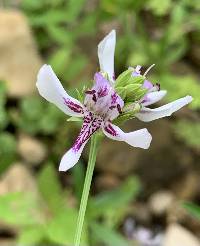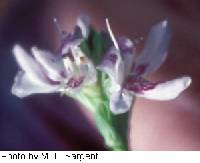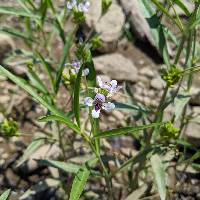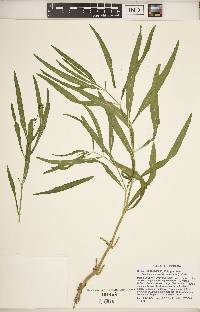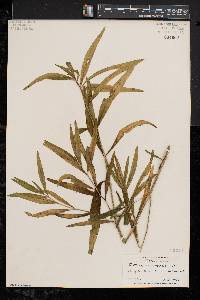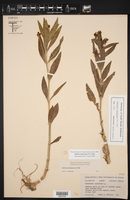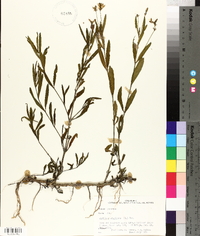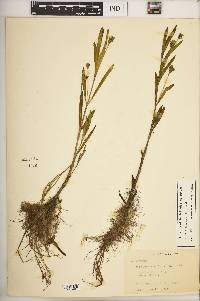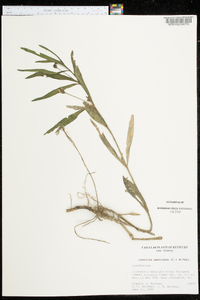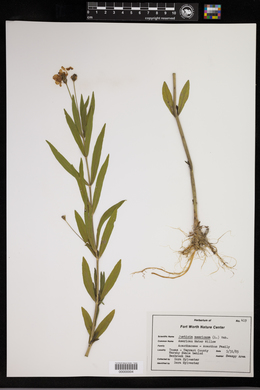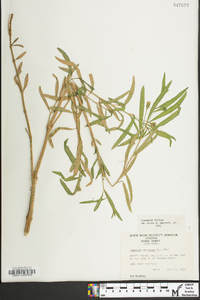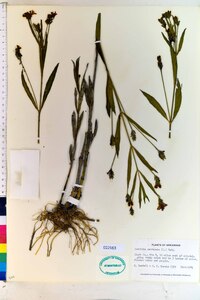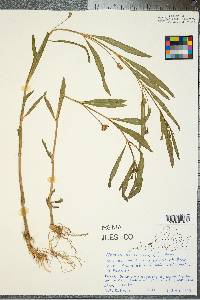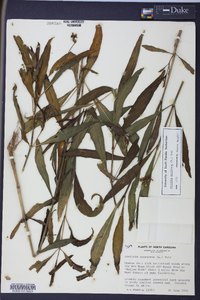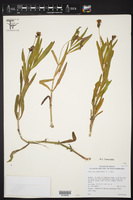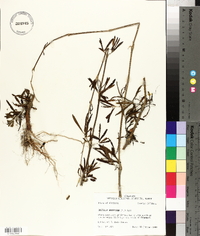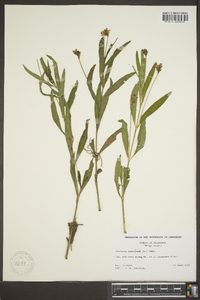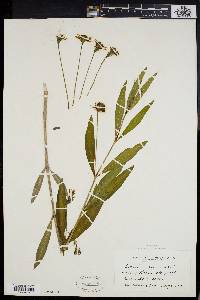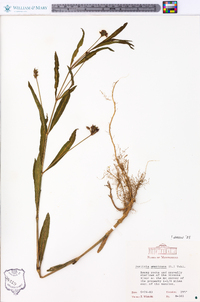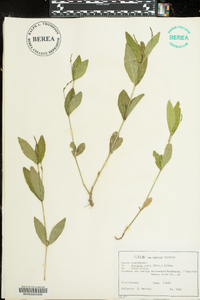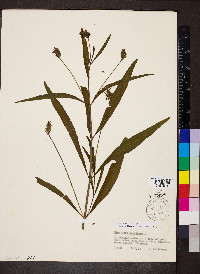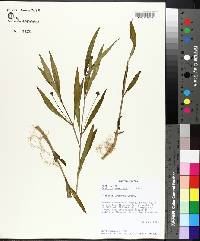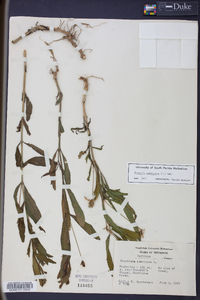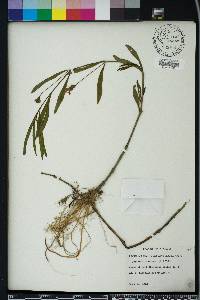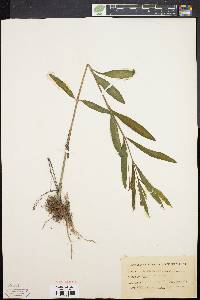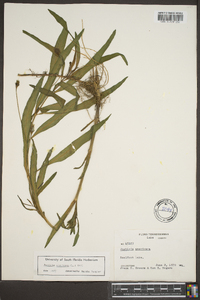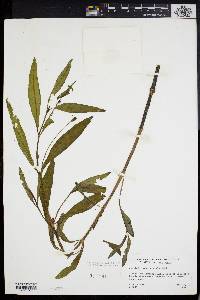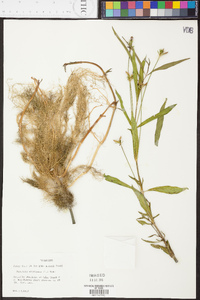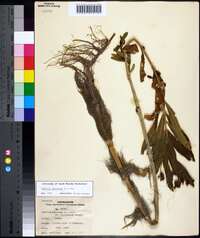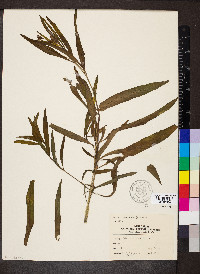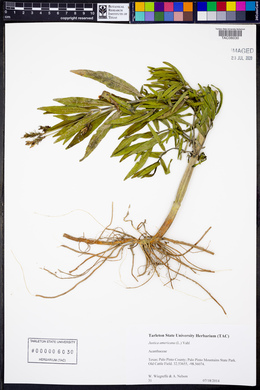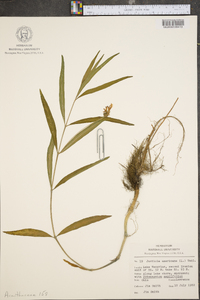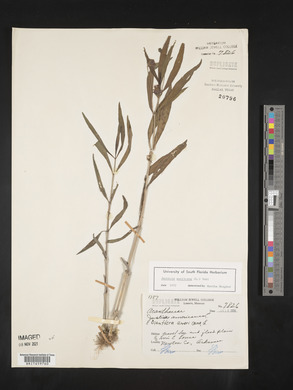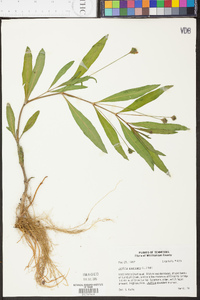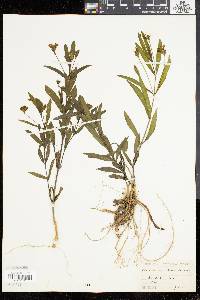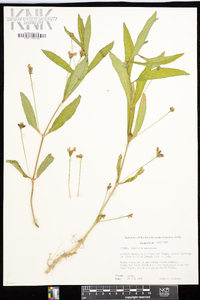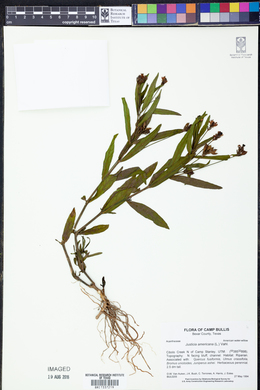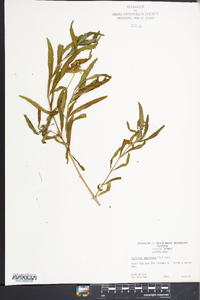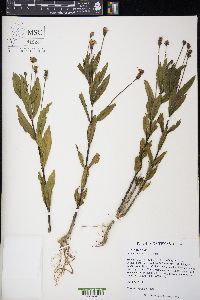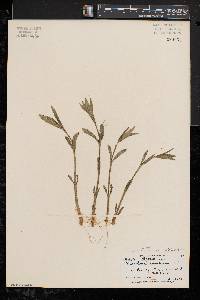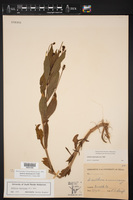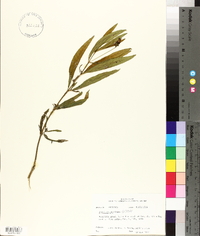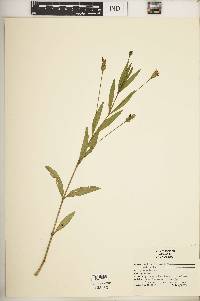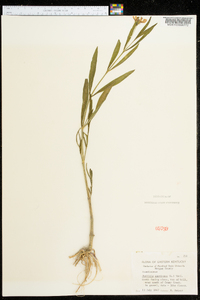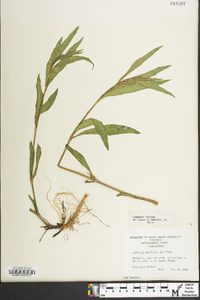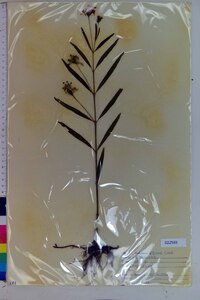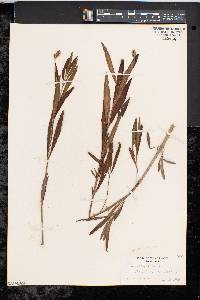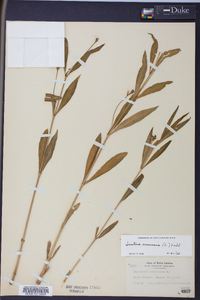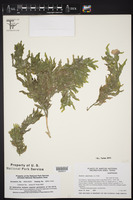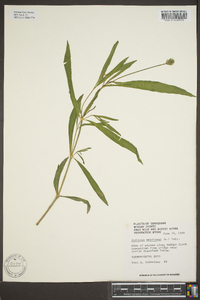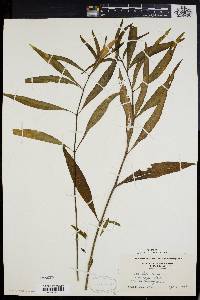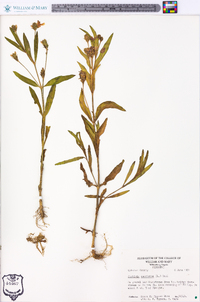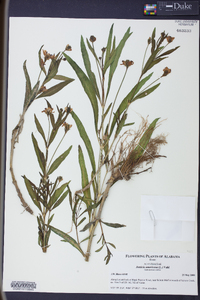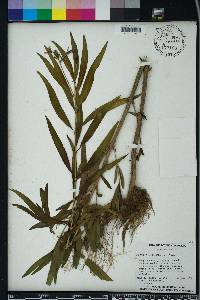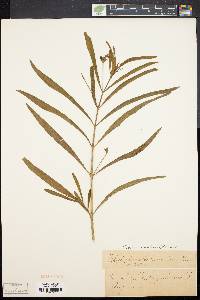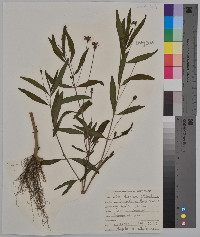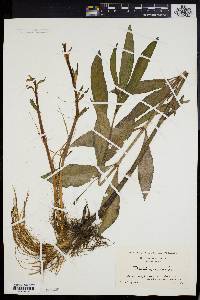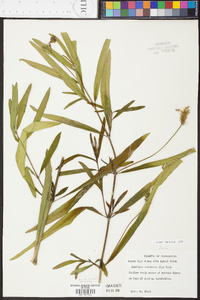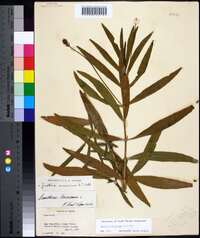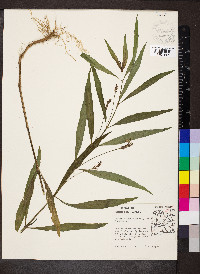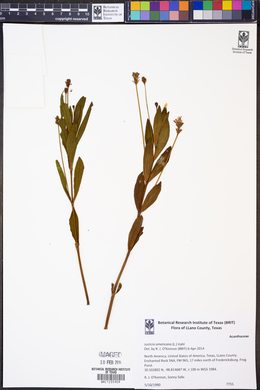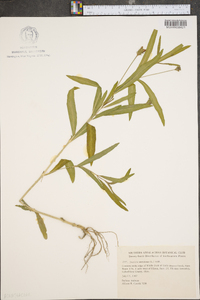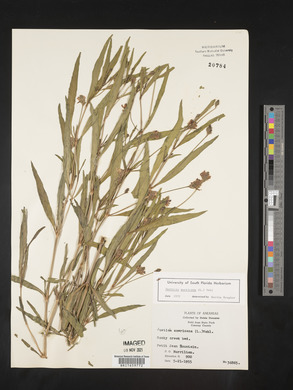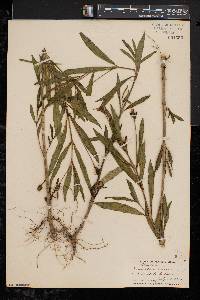Justicia americana
|
|
|
|
Family: Acanthaceae
American Water-Willow
[Dianthera americana Blanco, moreDianthera americana var. subcoriacea (Fernald) Shinners, Justicia americana var. subcoriacea Fernald, Justicia mortuifluminis Fernald, Justicia pedunculosa Michx., Justicia umbratilis S.Moore] |
Perennial colonial herb 0.5 - 1 m tall Stem: unbranched, hairless, with many thickened, cord-like rhizomes, and often rooting at the base. Leaves: opposite, erect or ascending, more or less stalkless, non-toothed, much longer than broad (up to 16 cm long), linear or lance-shaped, and tapering to both base and tip. Inflorescence: of 1 - 3 cm long, rounded or slightly elongate, crowded spikes raised on 5 - 15 cm long, ascending stalks, which arise from the axils of upper leaves. Within each spike, the flowers are arranged opposite, and subtended by three very small triangular bracts. Flowers: pale violet to nearly white, 0.8 - 1.3 cm long, bilaterally symmetric, strongly two-lipped with upper lip recurved, and the lower lip spreading and marked with purple. Sepals: five, but fused at base, then separating into firm, erect, about 5 mm long, 1 mm wide, somewhat elliptic, hairless lobes with pointed tips. Petals: five, but fused at base, then separating into an upper lip of two fused lobes, and a three-lobed lower lip. The upper lip is 6 - 7 mm long, erect, curved backwards, and usually marked with purple at the notched tip. The three lower lobes are each about 1 cm long, only 3 - 5 mm wide, and widely spreading, with the central lower lobe marked with dark purple at its base. Stamens: two, attached near the top of the petal tube with the white, about 5 mm long filaments holding the dark purplish or brown anthers slightly above the upper petal lip. Anther sacs two, separate, unequal in size, and positioned in opposing directions. Pistil: with a single, superior, two-chambered, green ovary; and a single, almost 1 cm long, white style, which holds the stigma erect and extended beyond the upper petal lip. Fruit: a two-chambered, 1 - 2 cm long, cylinder-shaped capsule with a constricted base, which forms a very short stalk. Seeds: pale brown, 3 mm wide, rounded to somewhat kidney-shaped, rough, warty, but without thickened edges. Similar species: Justicia americana is the only species of Justicia in the Chicago Region, but another species, J. ovata, does occur south and east along the Atlantic Coastal Plain and into the upper Mississippi Valley of eastern North America. That species differs by having its flowers in a loose spike, and the seeds are more or less smooth, but with distinct thickened edges. Flowering: June to August Habitat and ecology: Often found in mud along streams as well as in shallow water. Occurence in the Chicago region: native Notes: Swink and Wilhelm (1994) commented that they believe this species is becoming more common in our region due to increased soil erosion, and consequent increases in mud deposition in our streams resulting from agricultural expansion. Etymology: Justicia is named after James Justice, a Scottish horticulturist and botanist of the eighteenth century. Americana refers to the plant being "of America". Author: The Field Museum Colonial by rhizomes; stems 5-10 dm, often rooting below, usually simple, glabrous; lvs linear to lanceolate or narrowly oblong, 8-16 cm נ8-25 mm, long-cuneate at base; peduncles from several upper axils, stiffly ascending, 5-15 cm; spikes 1-3 cm, crowded with opposite fls, the cal longer than the internode above it; cal-lobes narrowly lanceolate, 4-8 mm; cor 8-13 mm, the lobes about equaling or a little longer than the tube, pale violet to nearly white, marked with purple on the lower lip; terminal pollen-sac transverse; seeds densely verrucose, 3 mm wide; 2n=26. Mud and shallow water; w. Que. to Mich. and Wis., s. and sw. to Ga., Kans., and Tex. June-Aug. (J. mortuifluminis; Dianthera a.) Gleason, Henry A. & Cronquist, Arthur J. 1991. Manual of vascular plants of northeastern United States and adjacent Canada. lxxv + 910 pp. ©The New York Botanical Garden. All rights reserved. Used by permission. From Flora of Indiana (1940) by Charles C. Deam This species grows in dense colonies on the muddy shores of streams and on muddy bars in streams and rarely on the low border of lakes. It is local to frequent in the counties indicated on the map. It appears to be absent or rare in the extreme northern part and rare in the southwestern part of the state. ...... Indiana Coefficient of Conservatism: C = 6 Wetland Indicator Status: OBL Diagnostic Traits: inflorescences a capitate floral cluster; flowers lacking broad bracts at their base; corollas strongly 2-lipped, the lower lip strongly 3-parted; stamens 2. |
|
|
|

